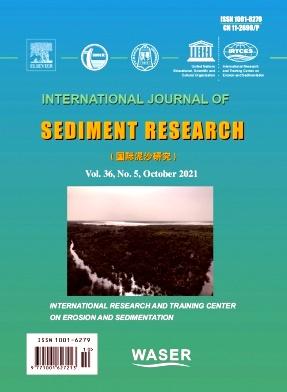Chemical composition of sediment and macrozoobenthos of small urban lakes, the Republic of Karelia, Russia
IF 3.7
2区 环境科学与生态学
Q2 ENVIRONMENTAL SCIENCES
引用次数: 0
Abstract
Assessing the benthic communities in water bodies under increasing anthropogenic pressure seems to be an urgent task of scientific research aimed at short-term and long-term monitoring of water bodies. This study focuses on the chemical composition of modern sediment and the current state of macrozoobenthos of small lakes in the Republic of Karelia (Kitaiskoe and Plotichie) influenced by anthropogenic factors. It was discovered that the lakes of Medvezhyegorsk have a higher concentration of heavy metals (such as lead (Pb), cadmium (Cd), molybdenum (Mo), and antimony (Sb)) compared to the Earth’s crust and natural background levels. The current study established the significant impact of industry and transportation on the movement and build up of pollutants in these lakes. The qualitative and quantitative parameters analyzed for the benthic communities in the littoral and profundal zones included the species diversity, the structure of dominant species, and their percentage in the samples. According to the level of macrozoobenthos development, both reservoirs (lakes) were classified as mesotrophic, and according to the values of the chironomid index “K” as moderately polluted. The Pantle–Buck method (saprobic index) showed that the lakes can be classified as polluted (water quality class 4). Macrozoobenthos groups most tolerant to environmental conditions, for example, Chironomidae larvae, prevailed in the studied urban lakes. The economic development of the lakes leads to ecosystem transformation and long-term eutrophication over time affecting the biotic indicators of surface water quality. The results obtained can serve as a basis for complex environmental monitoring of the urbanized territories in the taiga zone.
俄罗斯卡累利阿共和国城市小湖泊沉积物和大型底栖动物的化学成分
评估在不断增加的人为压力下的水体中的底栖生物群落似乎是旨在对水体进行短期和长期监测的科学研究的紧迫任务。本文研究了受人为因素影响的卡累利阿共和国(Kitaiskoe和Plotichie)小湖泊现代沉积物的化学成分和大型底栖动物的现状。据发现,梅德维日耶戈尔斯克湖的重金属浓度(如铅(Pb)、镉(Cd)、钼(Mo)和锑(Sb))高于地壳和自然背景水平。目前的研究确定了工业和运输对这些湖泊中污染物的移动和积累的重大影响。分析了滨深带底栖生物群落的物种多样性、优势种结构及其在样品中的比例。根据大型底栖动物的发育程度,两个水库(湖)被划分为中营养型,根据chironomid指数“K”值被划分为中度污染。Pantle-Buck法(污染指数)表明,城市湖泊可被划分为污染湖泊(水质4级)。对环境条件最适应的大型底栖动物类群以手蛾科幼虫为主。随着时间的推移,湖泊的经济发展导致了生态系统的转变和长期的富营养化,影响了地表水水质的生物指标。研究结果可为针叶林城市化地区的复杂环境监测提供依据。
本文章由计算机程序翻译,如有差异,请以英文原文为准。
求助全文
约1分钟内获得全文
求助全文
来源期刊
CiteScore
6.90
自引率
5.60%
发文量
88
审稿时长
74 days
期刊介绍:
International Journal of Sediment Research, the Official Journal of The International Research and Training Center on Erosion and Sedimentation and The World Association for Sedimentation and Erosion Research, publishes scientific and technical papers on all aspects of erosion and sedimentation interpreted in its widest sense.
The subject matter is to include not only the mechanics of sediment transport and fluvial processes, but also what is related to geography, geomorphology, soil erosion, watershed management, sedimentology, environmental and ecological impacts of sedimentation, social and economical effects of sedimentation and its assessment, etc. Special attention is paid to engineering problems related to sedimentation and erosion.

 求助内容:
求助内容: 应助结果提醒方式:
应助结果提醒方式:


